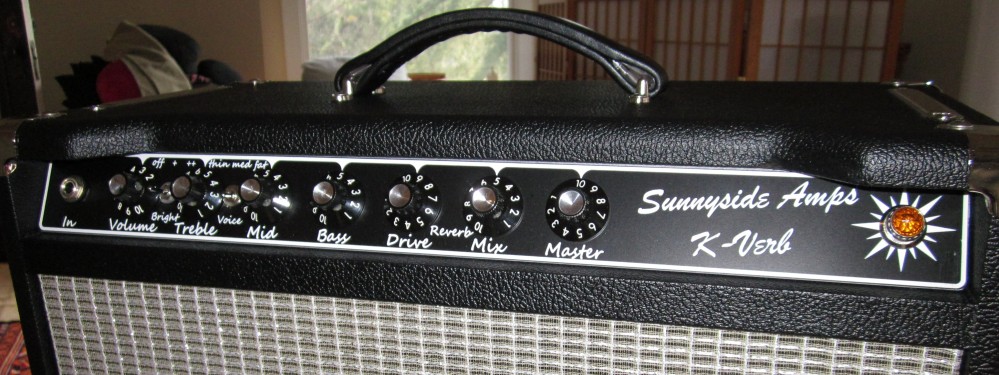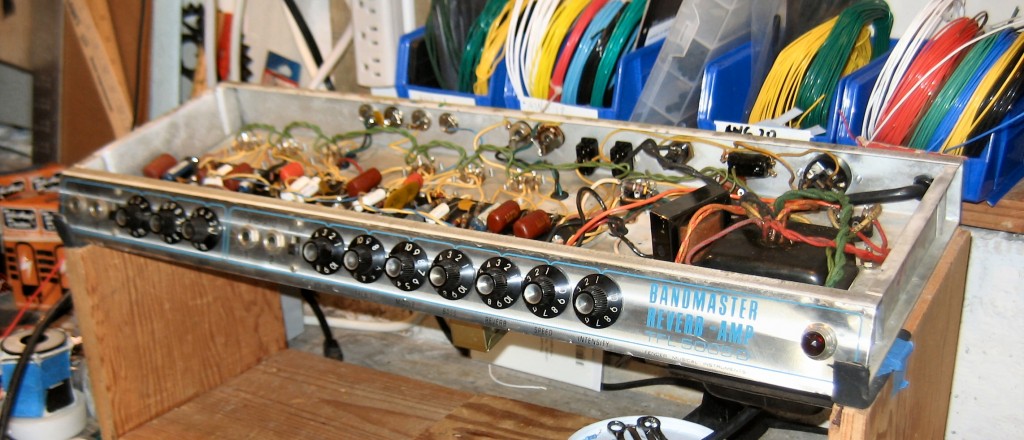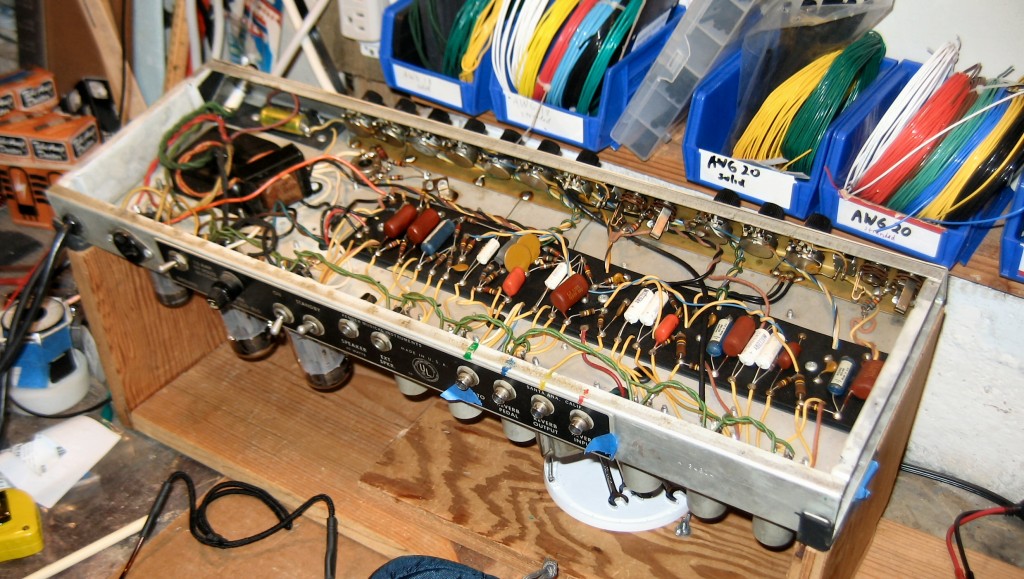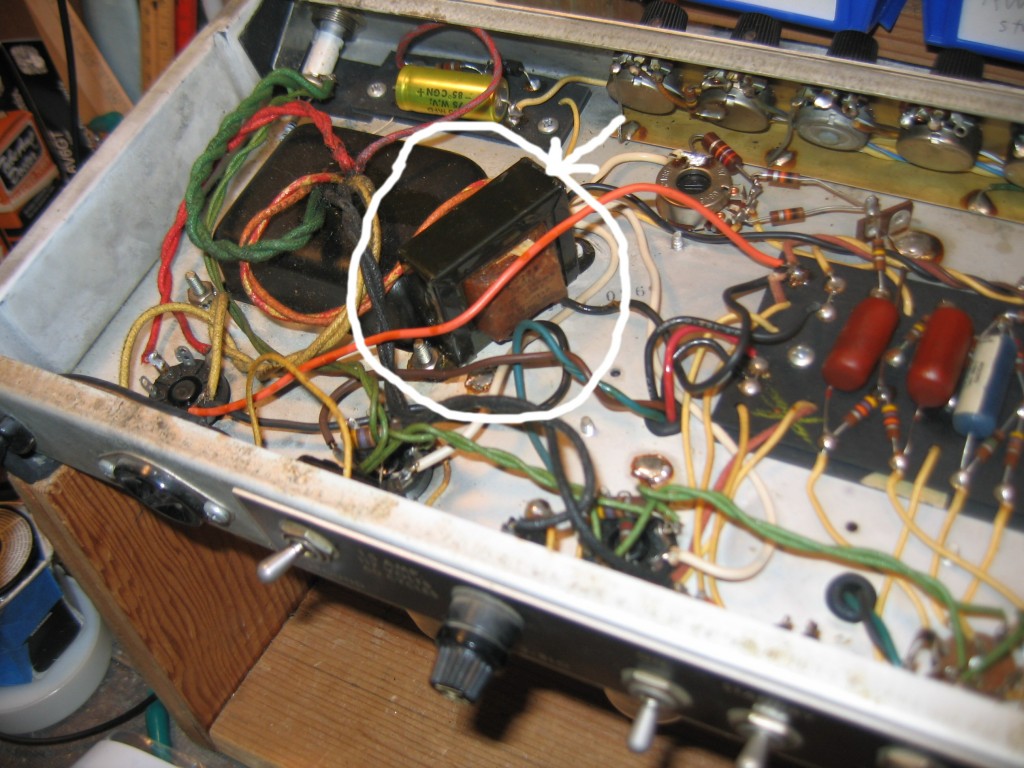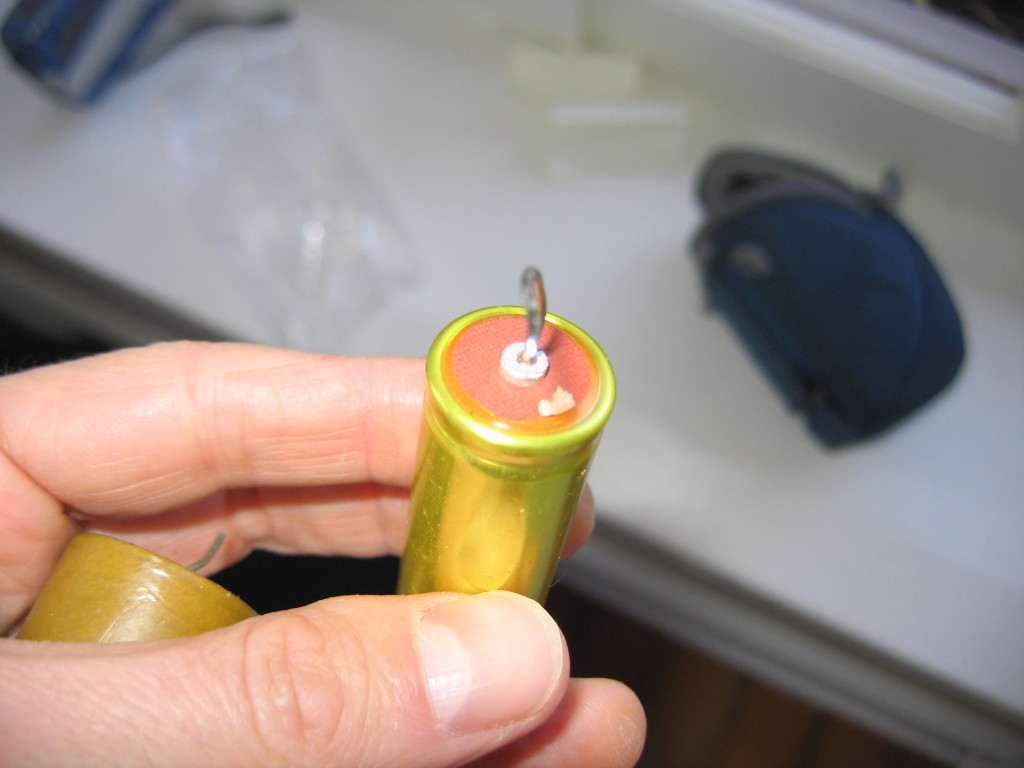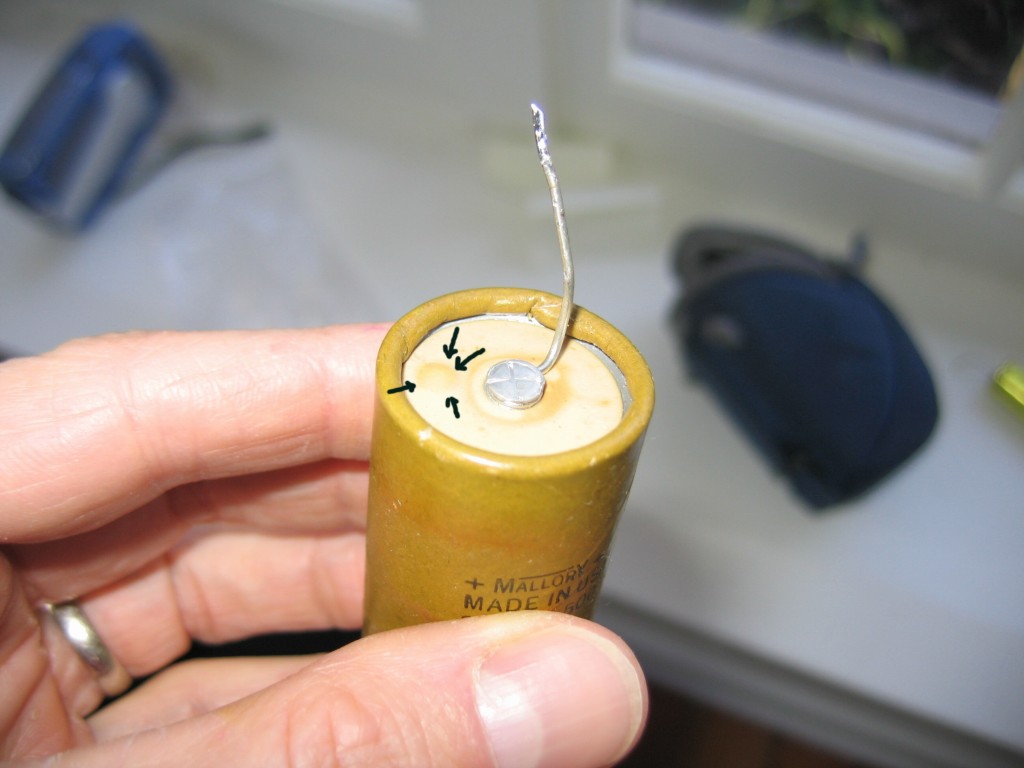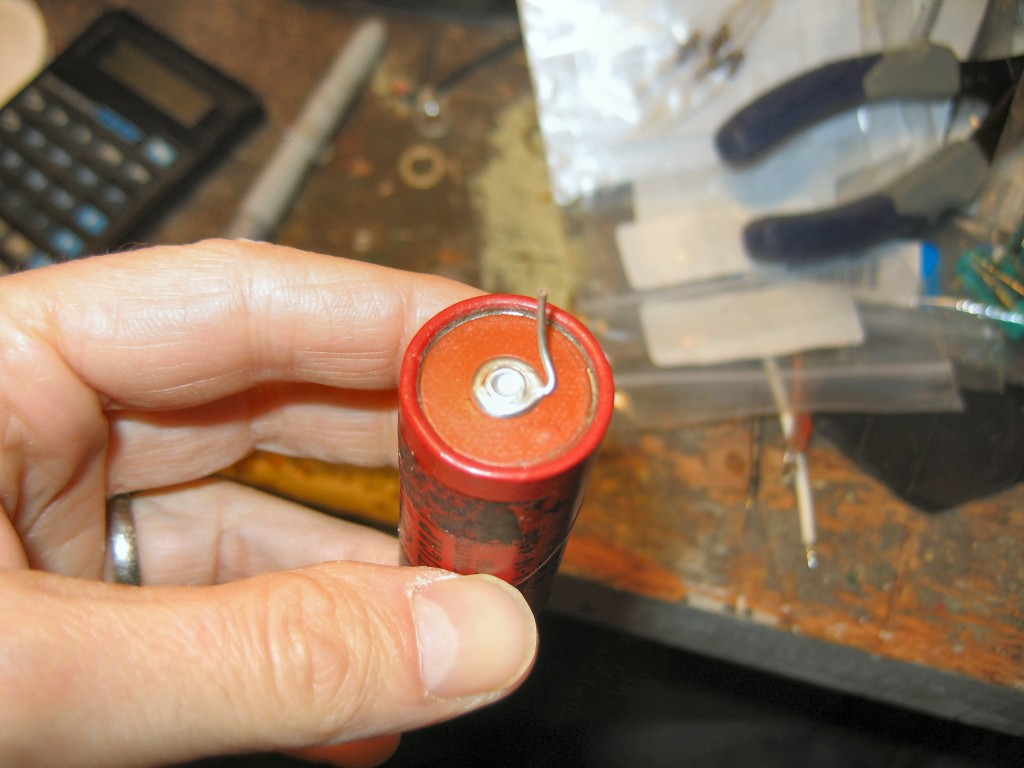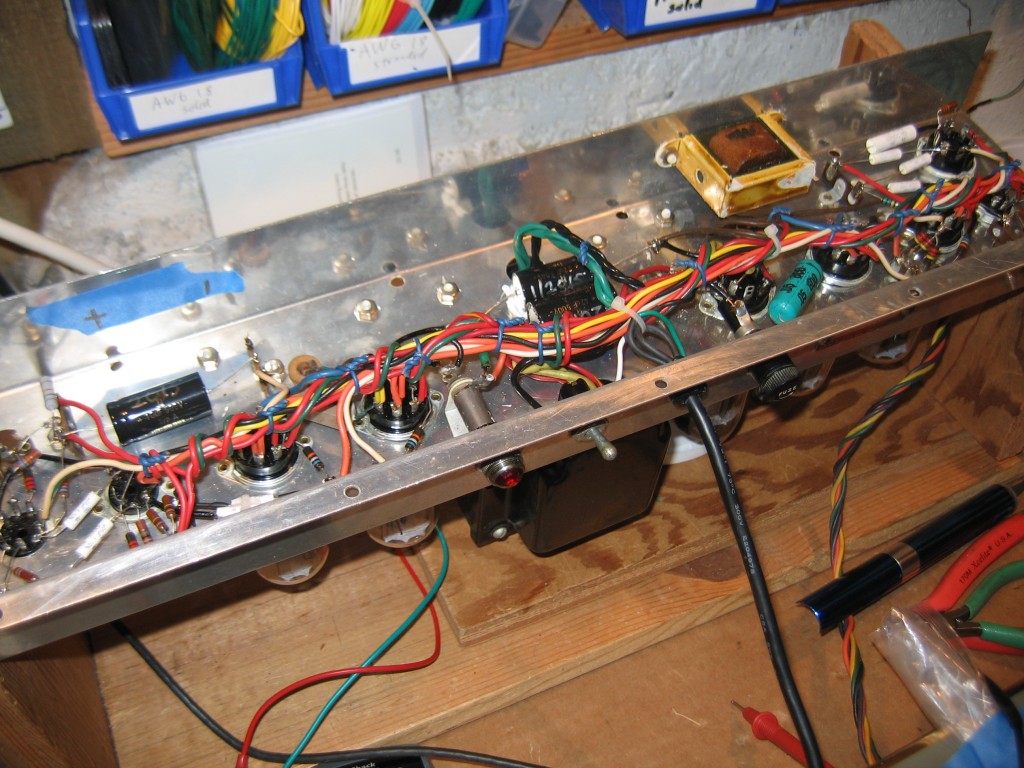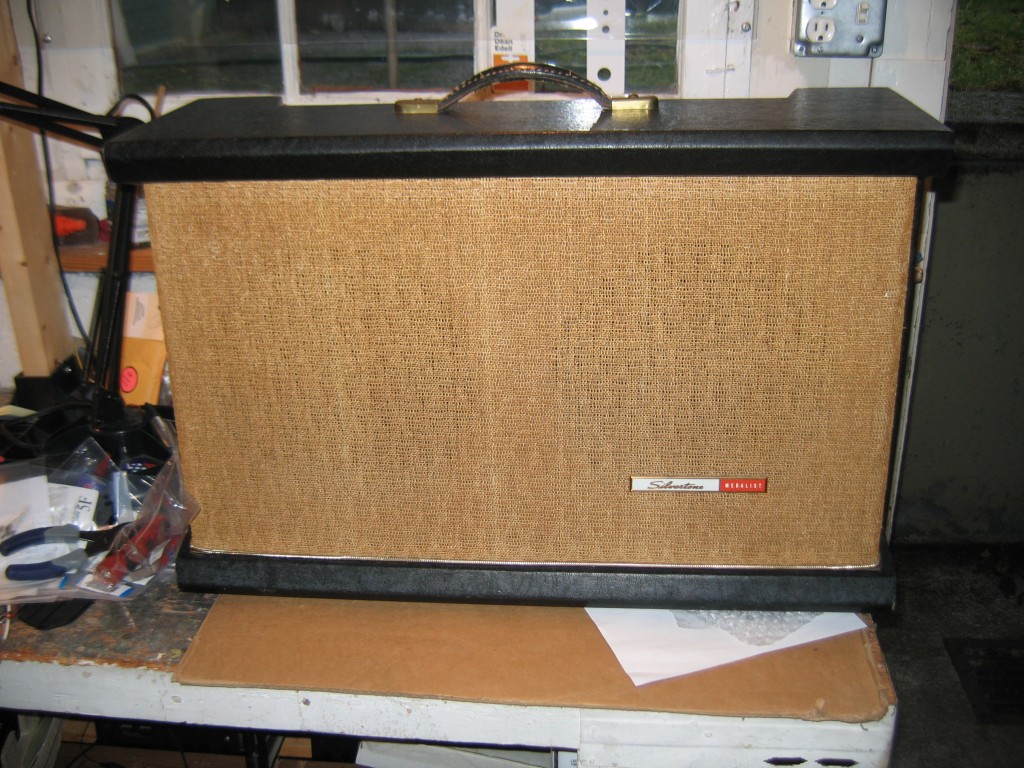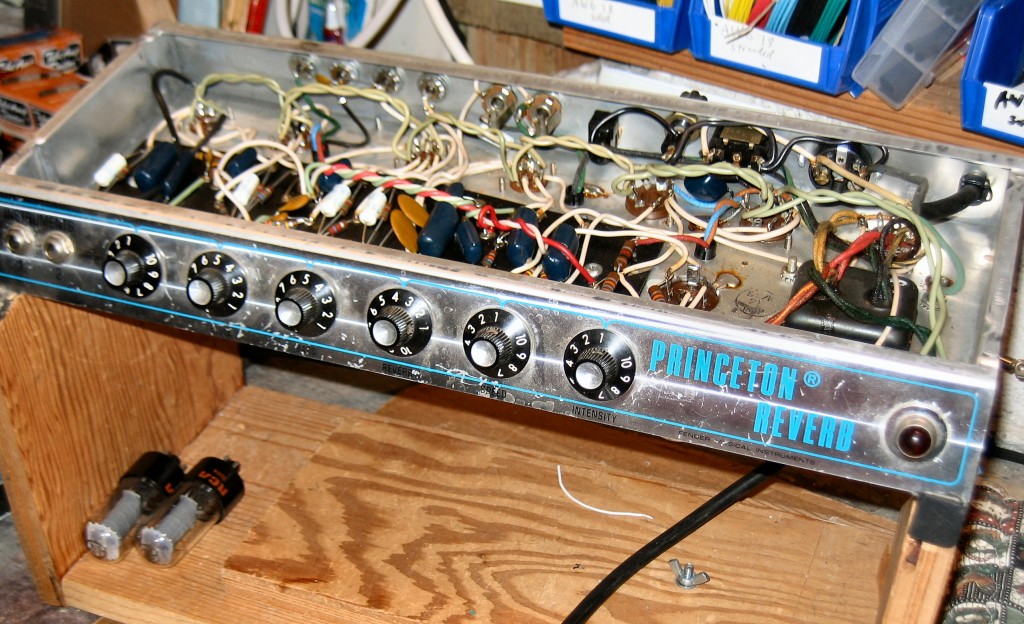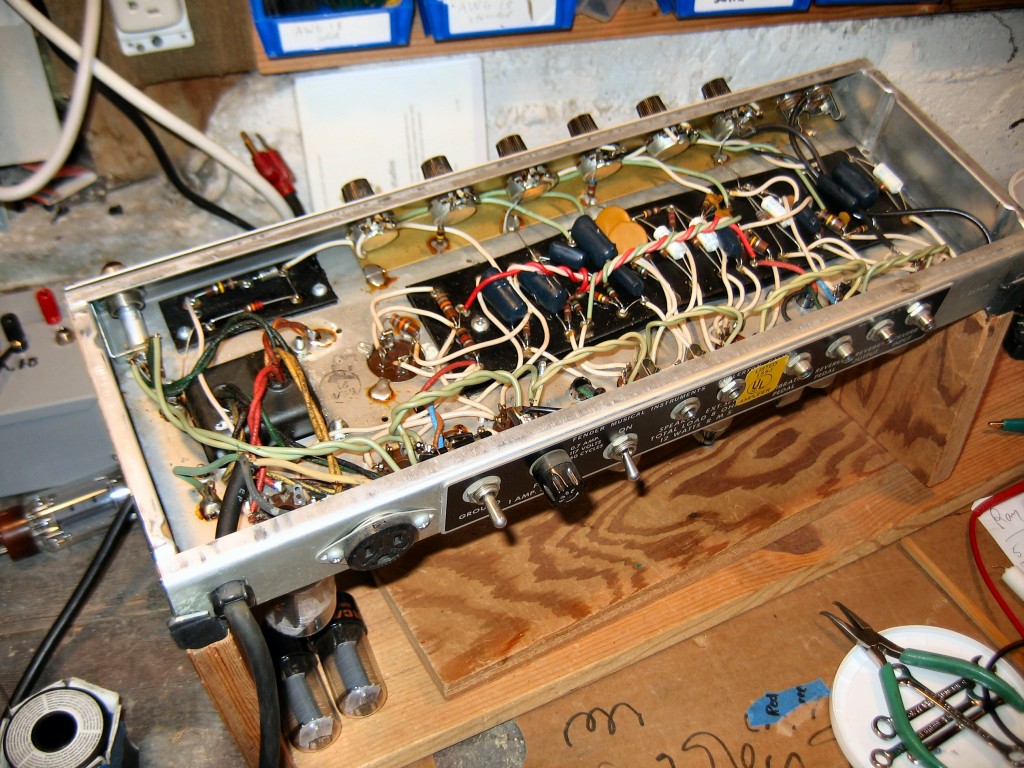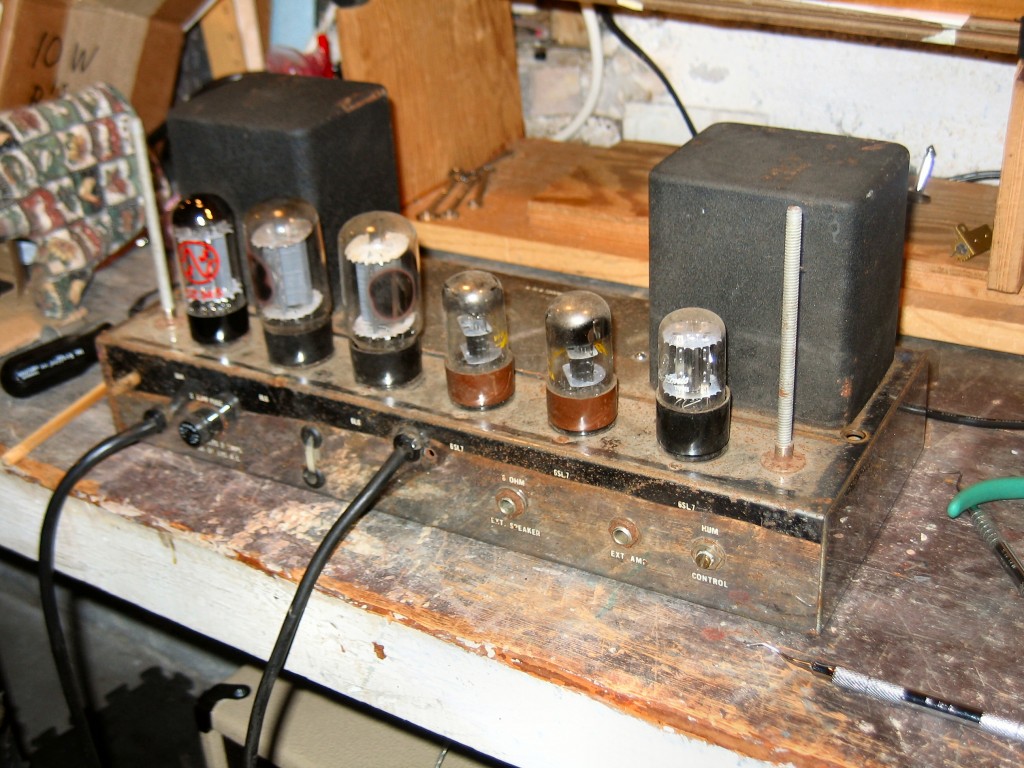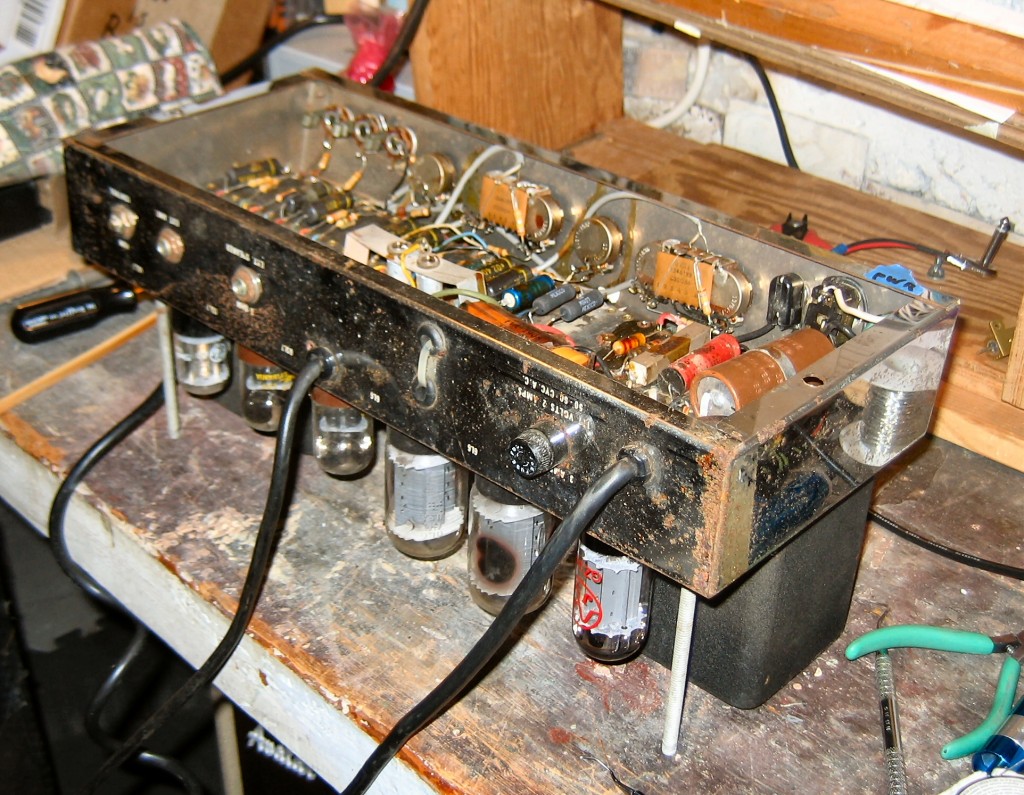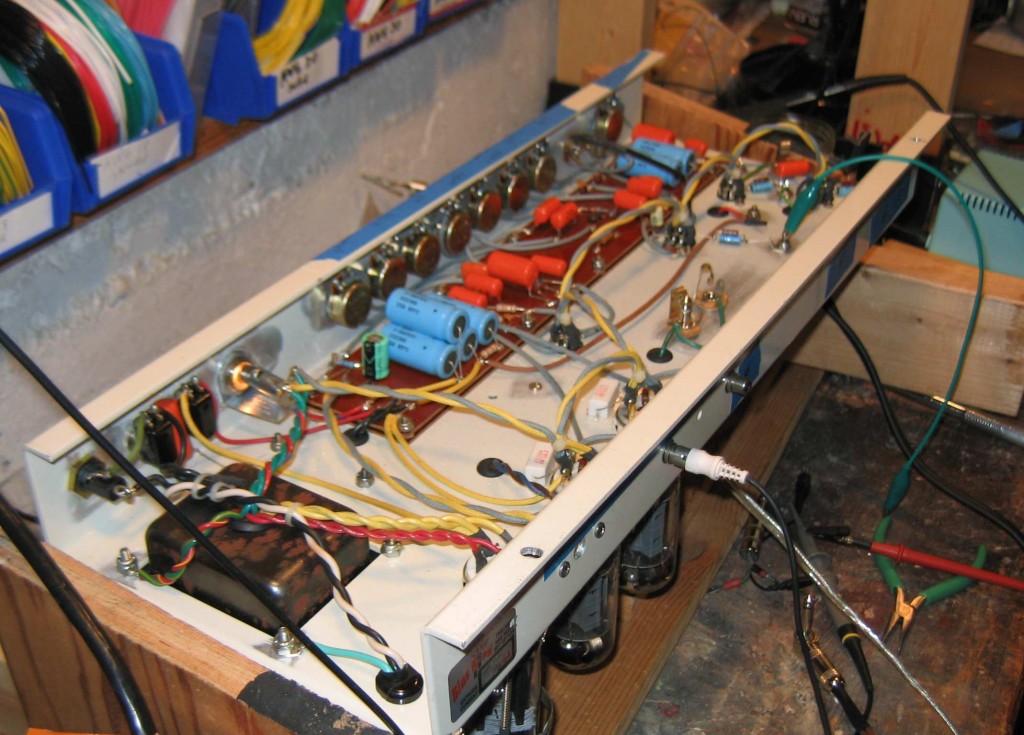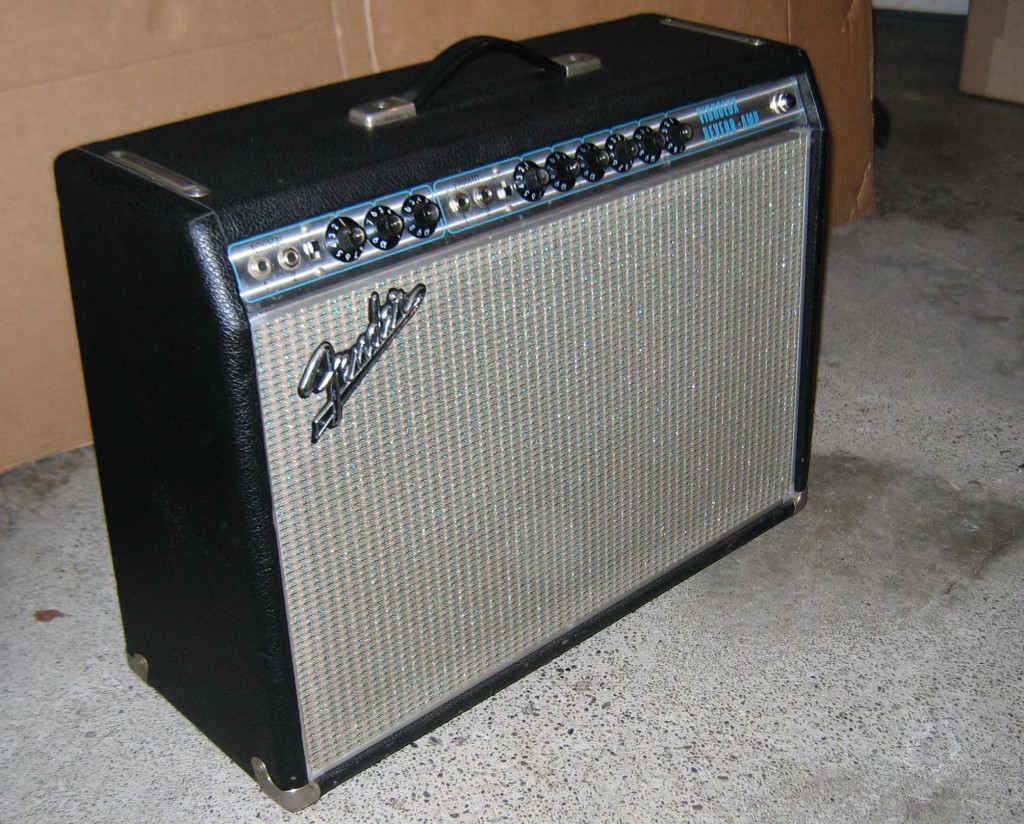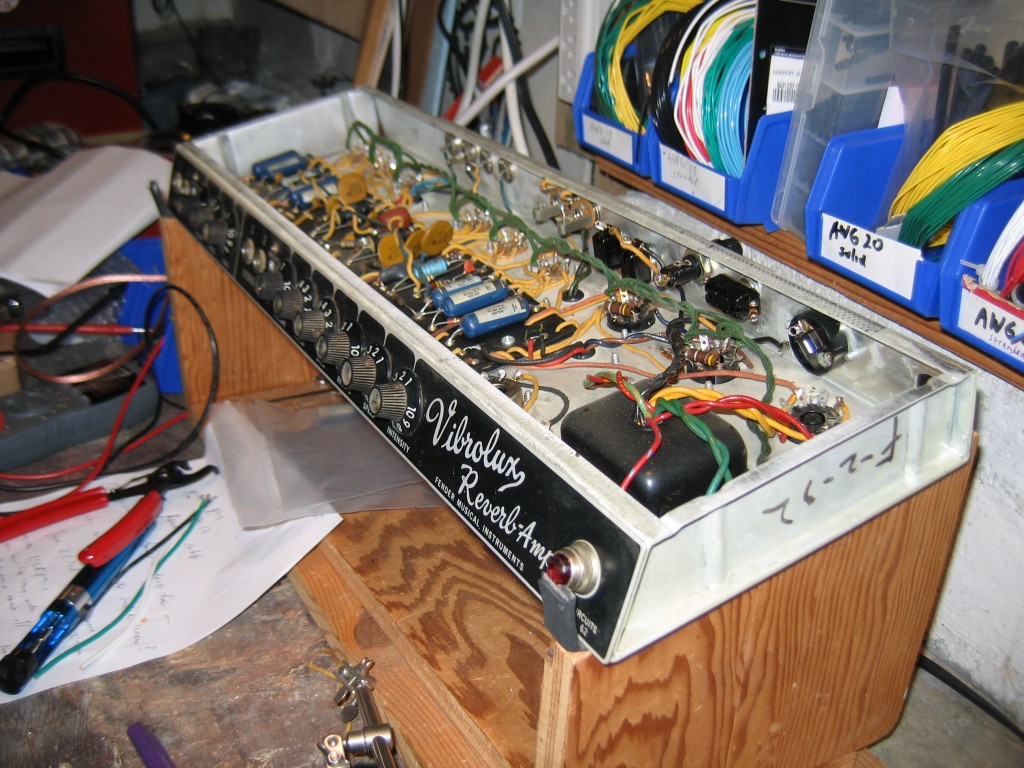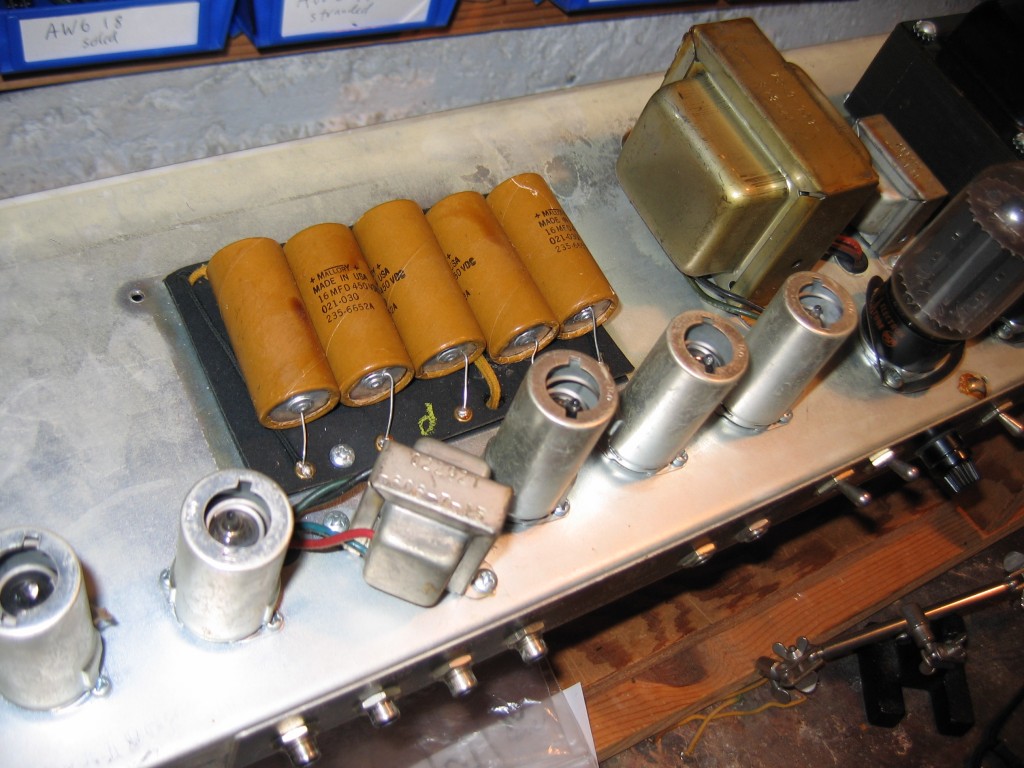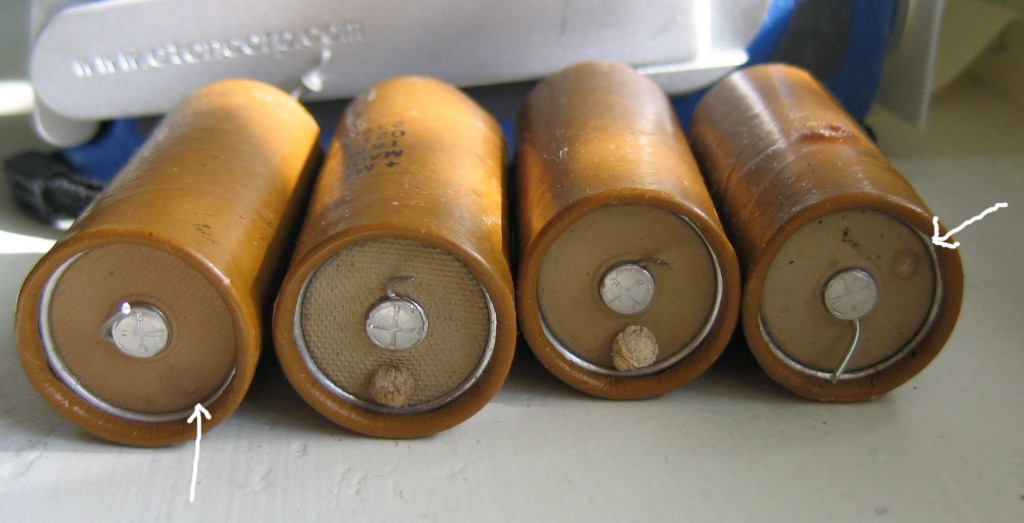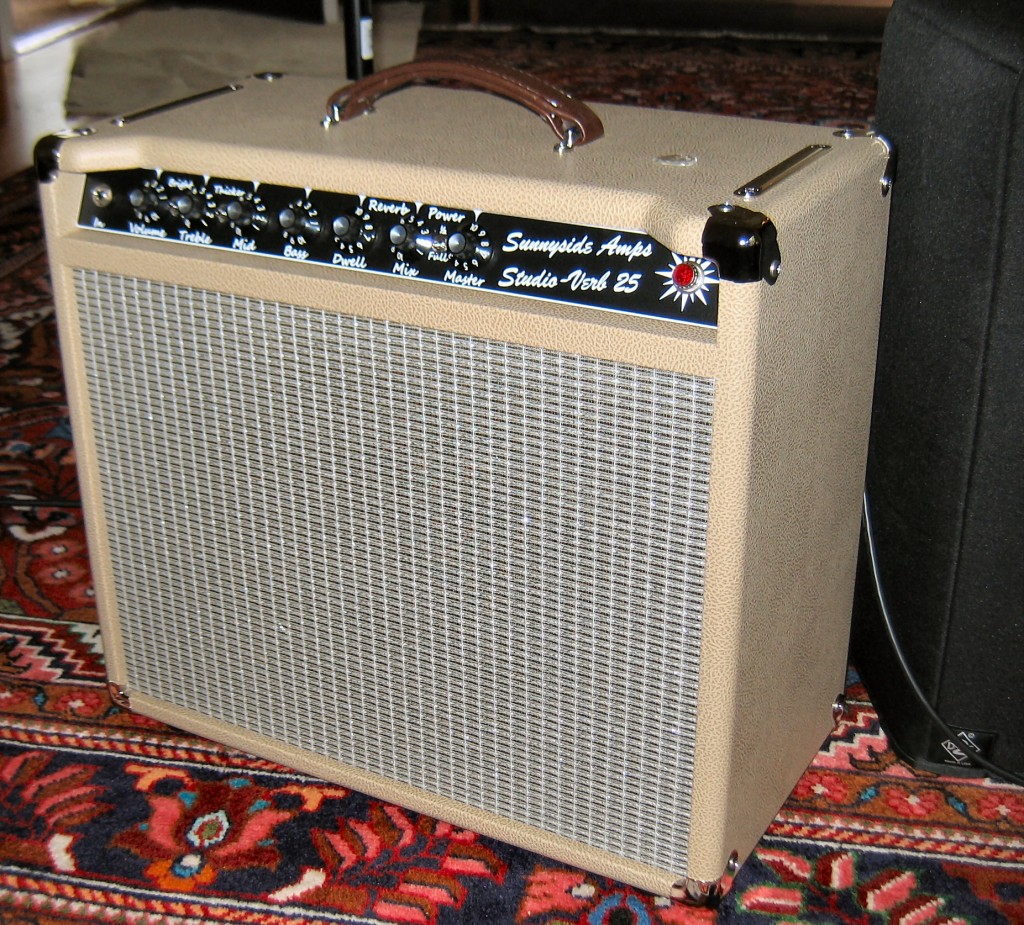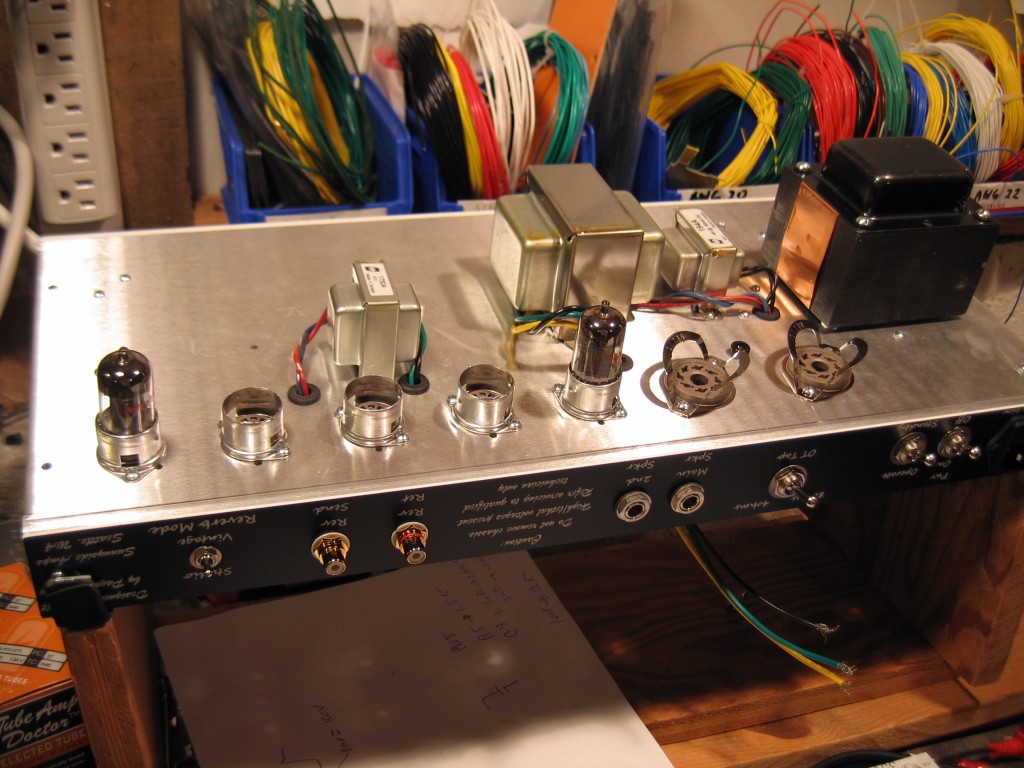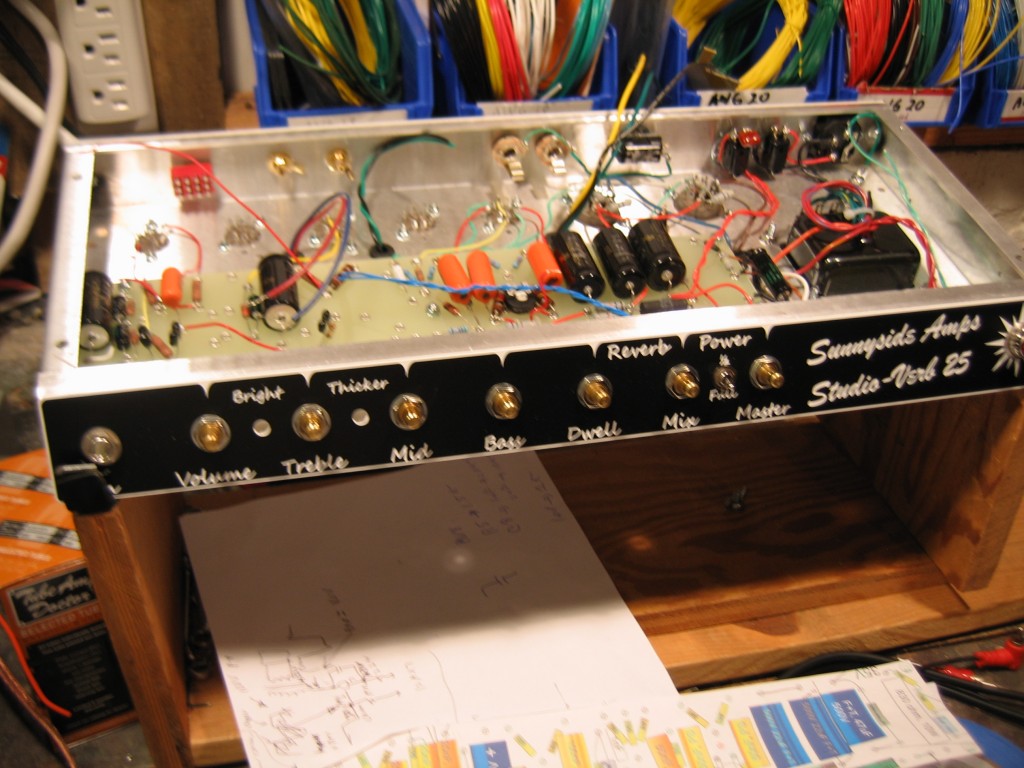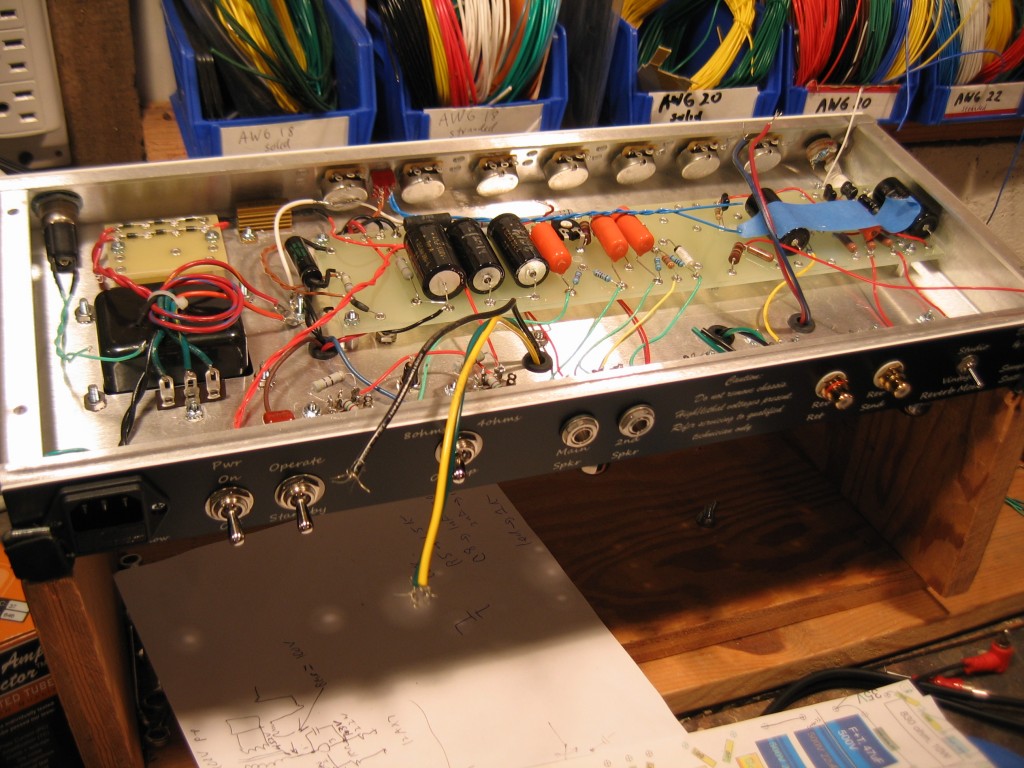Silverface Bandmaster Reverb in the shop! These amps are kind of off the radar of many guitar players. They are a nice amp, 40W, 2 6L6 with tube-driven Reverb and tremelo, what’s not too like? 🙂 I have seen a number of them come through the shop here. This one has old (and failing) electrolytic caps, some kind of extra choke (see last photo below) hacked-into the chassis (even though the choke is not doing anything, as it’s shorted by a wire) wonder what the history on this amp is? In any case, after replacing the electrolytic caps, installing a new, properly-grounded, AC power cord (for safety), and possibly changing the bias circuit from bias-balance-adjust to bias-adjust, I bet this will sound fantastic!
** Someone, who did repair work on this at some point in time, replaced the first two (main) power supply filter capacitors with a value that is half of what’s spec’d. No wonder the customer was complaining of weak bass response! Also, some of the caps are 50+ years old, one has sprung a leak (The yellow one), and the paper one has a dimple on the end of the cap that would have soon turned into a leak, and a failed power supply. See the bottom two photos in this post.
